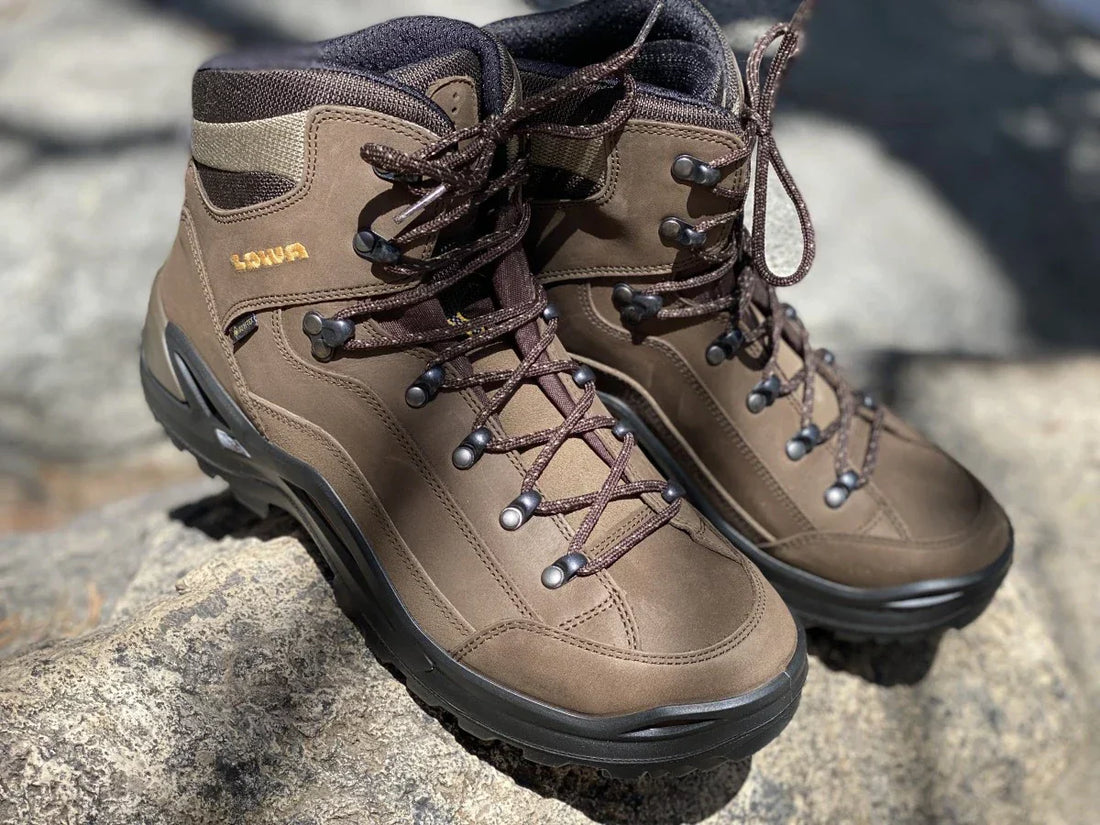
Engineering the Perfect Hiking Boot
When you step onto the trail, your boots are your foundation. A great hiking boot can carry you for hundreds of miles in comfort, while a poorly designed one can turn an adventure into a painful grind. At Engineering Outdoors, we don’t just test gear, we break it down to see why it works (or doesn’t).
Today, we’re digging into the engineering behind hiking boots, comparing how design, materials, and construction all come together to create performance you can trust.
The Anatomy of a Hiking Boot
Every hiking boot is a system of parts working together:
-
Outsole (traction + durability)
Made from rubber compounds, this is where grip meets longevity. A softer rubber grips rock better but wears faster, while harder compounds last longer but can slip on slick terrain. Lugs (the tread pattern) act like tires, designed for mud, snow, or mixed use. -
Midsole (cushioning + support)
Usually EVA foam or polyurethane (PU). EVA is lighter and cushier but breaks down quicker. PU is firmer, heavier, and built for carrying heavy loads. -
Upper (protection + flexibility)
Leather uppers mold to your foot and are extremely durable, while synthetics cut weight and dry faster. Hybrids aim for the sweet spot. -
Waterproof Membranes (weatherproofing)
Gore-Tex and similar membranes keep water out while allowing sweat vapor to escape (in theory). Real-world breathability often depends on ventilation, not just the membrane.
Engineering Tradeoffs
Every boot design is a series of choices. Some of the most common tradeoffs:
- Comfort vs. Durability – Softer materials feel great out of the box but wear down quicker.
- Flexibility vs. Ankle Support – Trail runners and light boots flex naturally but leave ankles exposed. Heavier boots stabilize ankles but restrict motion.
- Weight vs. Protection – Lighter boots save energy over long miles but sacrifice protection from rocks and roots.
Understanding these tradeoffs is key to picking the right boot for your adventure.
Head-to-Head Test: Premium vs Mid-Range
For this breakdown, let's consider two popular hiking boots:
- Premium: Lowa Renegade GTX Mid
- Mid-Range: Merrell Moab 3 Mid Waterproof
Here’s how they stacked up in real conditions:
Grip: The Lowa’s Vibram sole outperforms on slick rock, though Merrell can hold its own on dry dirt.
Water Resistance: Both boots resist shallow stream crossings, but the Merrell will likely show dampness sooner in heavy rain.
Weight & Comfort: The Merrell feels lighter and breaks in faster, while the Lowa offers better long-term support under a 25-lb pack.
Results & Takeaways
- Day hikers/light packers may prefer the Merrell — lighter, flexible, and wallet-friendly.
- Backpackers/heavy load carriers will get more from the Lowa — stronger support, more durable outsole, and proven weather protection.
The engineering lesson? It’s not about the “best” boot overall — it’s about the best boot for the application.
Want more breakdowns? Subscribe to EO and join us as we engineer smarter adventures.
